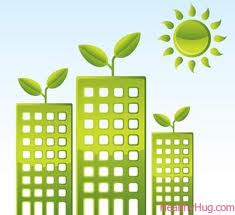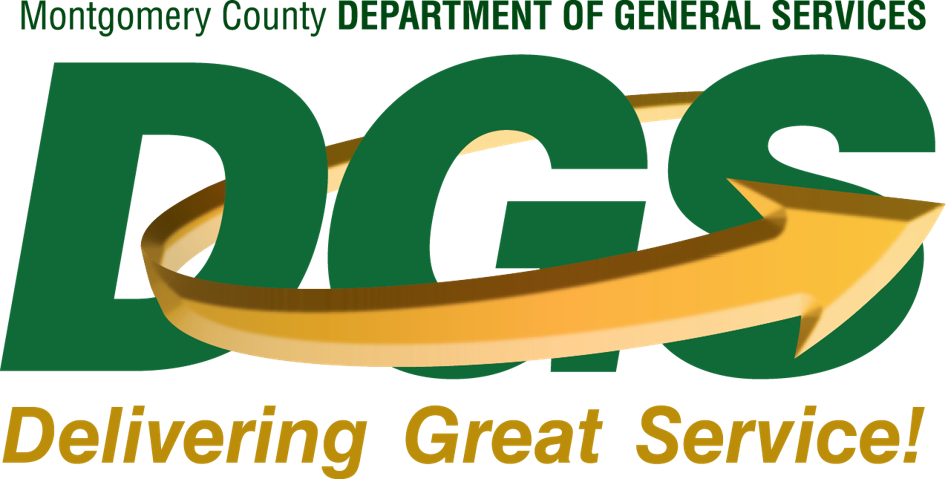Green Building
Montgomery County, Division of Building Design and Construction is committed to providing leadership which will foster conservation, protection and improvement of the environment by planning, designing, constructing and maintaining buildings that are energy efficient, environmentally friendly and resource-efficient.

Montgomery County Green Buildings Law
In April 25, 2006 a bill was introduced, enacted Nov. 28, 2006 and become effective March 1, 2007 that establishes the Energy Efficiency and Environment Design requirements for County built or funded buildings.
County Regulation requires that, effective March 1, 2007 that County-built or County-funded buildings over 10,000 square foot in size meet Energy Efficiency and Environmental Design requirements as follows:
If a County-built or County-funded building is not included in the capital budget, the building must achieve a LEED-Silver rating or equivalent if its building permit application is filed on or after September 1, 2008.
To view the regulations, please visit the Department of Permitting Services.

Leadership in Energy & Environmental Design (LEED)
The LEED (Leadership in Energy and Environmental Design) Green Building Rating System was developed by the United State Green Buildings Council (USGBC). It identifies criteria that positively impact the energy and environmental characteristics of a building, including sustainability of a site, water efficiency, energy efficiency, materials and resources, and indoor environmental quality.
Sustainable Design, Construction and Operations
Sustainable building integrates building materials and methods that promote environmental quality, economic vitality, and social benefit through the design, construction and operation of the built environment. Sustainable design, construction and operations merges sound, environmentally responsible practices and looks at the environmental, economic and social effects of a building or project as a whole. These sustainable aspects of the development process encompass the following broad topics: efficient management of energy and water resources, management of material resources and waste, protection of environmental quality, protection of health and indoor environmental quality, reinforcement of natural systems, and integrating the design approach.
Sustainability is a guiding principle for project development and is incorporated into the project from the earliest stages. Sustainable design principles affect all phases of project development including design, construction, operations and maintenance, and demolition and disposal.
- Design integration to meet Sustainable Design, Construction and Operations Objectives
Sustainability is integrated into all phases of the design process, using an approach which balances social, economic, and environmental factors. Sustainability is incorporated into the earliest design discussions with a sustainable design charrette to kick-off the project to ensure that all design and construction team members are familiar with sustainability concepts and basic sustainable building practice. The charrette is utilized as a group process to define and refine sustainable goals and priorities to aid in the design optimization process. Throughout the sustainable design process, collaborative, multi-disciplinary teams explore opportunities to design integratively and serve multiple functions with individual design elements.
- The approach to Life Cycle Cost Analysis for optimization of design features
This portion of design analysis includes an inclusive approach to costing that encompasses planning, design, construction, operation and maintenance costs and finally any decommissioning or disassembly costs. Life Cycle Cost Analyses assess issues, options, and tradeoffs related over the projected useful life of a project and looks at the net present value of design options as investments. The goal is to achieve the highest environmental performance possible at the least cost. In addition, the design team conducts facility performance modeling in order to investigate the interrelationships of economic and environmental performance of various facility systems. Performance modeling defines the boundaries of differing design scenarios to investigate trade-offs and optimize performance.
- The rating which the facility will obtain utilizing the LEED (Leadership in Energy and Environmental Design) Rating System™
LEED™ stands for Leadership in Energy and Environmental Design, and is a voluntary, consensus-based, market-driven green building rating system. It is based on existing, proven technology and evaluates environmental performance from a "whole building" perspective. LEED™ is a self-certifying system designed for rating new and existing commercial, institutional, and multi-family residential buildings. It contains prerequisites and credits in five categories: Sustainable Site Planning, Improving Energy Efficiency, Conserving Materials and Resources, Embracing Indoor Environmental Quality, and Safeguarding Water. There are four rating levels: Certified, Silver, Gold, and Platinum.
- The approach to protection of water resources
Water conserving methods are considered in all aspects of the facility design, including indoor and outdoor water use. Designers develop water budgets for the facility, and consider innovative water technologies. Potable water use is minimized within the facility by appropriately sizing systems and using water efficient technologies and cascading water use systems. Alternative systems which harvest on-site flows are also considered. Site water flows are maintained by minimizing erosion, encouraging infiltration, and utilizing innovative stormwater management techniques. Water quality is protected by avoiding the use of toxic materials on the site during development and for future maintenance. Low impact landscaping and future Integrated Pest Management strategies are implemented in order to protect water quality.
- The approach to minimization of power usage during all project phases
Energy efficiency methods are considered in all aspects of the facility design, including HVAC/Lighting needs. Energy efficiency strategies maximize solar access and aim to harvest natural on-site energy resources such as daylight and geothermal heat. Alternative energy sources, such as fuel cells and alternative fuel generations, are considered. Building energy usage reduce electricity consumption, eliminate unnecessary demand, and emphasize equipment efficiency and energy efficient control strategies.
- The approach to management of material resources, including minimization of construction waste
The facility is designed for adaptability and minimizes material use with efficient planning and design detailing, engineered materials, and modular design. The design specifies low maintenance and durable materials. Sustainable materials that minimize environmental impact as well as re-used, salvaged materials, and recycled content materials are used. Waste reduction and recycling is encouraged by recycling construction demolition and waste with a jobsite management plan, and with provision of easy access recycling stations and pick-up areas.
- The approach to protection of indoor and outdoor environmental quality, and minimization of chemical usage during all project phases
The design of the facility aims to reduce pollutant sources in both interior and exterior environments. For interior spaces, this is includes the design of mechanical systems and the choice of interior materials, finishes, and adhesives. Ozone depleting chemicals in mechanical equipment and insulation are avoided. The health of building occupants and construction workers/installers/maintenance staff is also protected. In addition, environmental protection of the site, including habitat protection and environmental restoration, is considered. Environmental disturbance is minimized during the construction process.
- The approach to regional design suitability
The facility design responds to local climatic and ecological context by incorporating solar patterns, wind patterns, hydrology and geology into design features. A regional design palette is used for both plants and other materials. The site is developed using ecological design principles to mimic natural systems function. Benefits of vegetation are maximized.
For more information see: U.S. Green Building Council

